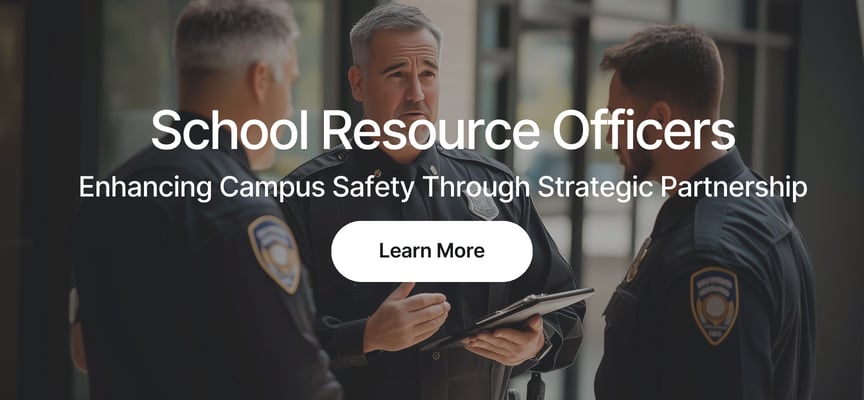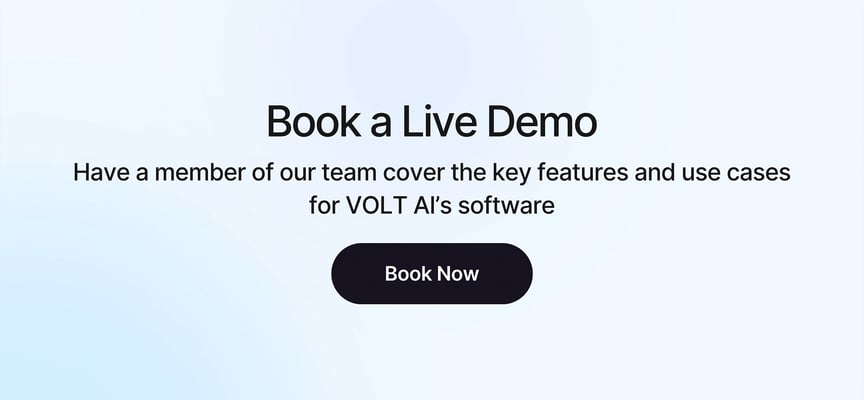Key Points
- Research shows SROs can be effective when deployed as part of a comprehensive security strategy
- Success depends heavily on clear role definition and proper resource allocation
- Technology integration significantly enhances SRO effectiveness and program cost-efficiency
- Schools see best results when combining SROs with modern security systems
- Proper training and community engagement are essential success factors
The debate around School Resource Officers (SROs) continues to evolve as educational institutions seek the most effective ways to protect their students and staff. While approximately 58% of public schools now have at least one SRO present during the week, questions remain about program effectiveness and optimal implementation.
Let's examine what the research tells us about SRO programs and how schools can maximize their impact.
The Real Impact of School Resource Officers
Before diving into specific statistics and outcomes, it's important to understand that SRO effectiveness often depends heavily on how programs are structured and supported. Research reveals a nuanced picture of SRO impact on school safety.
Key findings from recent studies show:
- Schools with SROs report faster response times to serious safety incidents
- Proper SRO programs show improved emergency preparedness
- Student surveys indicate increased feelings of safety when SROs build positive relationships
- Cost-effectiveness varies significantly based on program implementation
- Results depend heavily on clear role definition and proper support
The data suggests that SROs can be highly effective when deployed correctly as part of a comprehensive security strategy.

Common Challenges in SRO Programs
School Resource Officer programs face a complex set of challenges that often limit their effectiveness and return on investment. While many schools view SROs as a cornerstone of campus safety, the reality is that even the most dedicated officers can't be everywhere at once.
These dedicated professionals frequently find themselves stretched thin across large campuses, juggling multiple responsibilities while trying to maintain the personal connections that make their role so valuable.
Understanding these challenges isn't about questioning the value of SROs - it's about recognizing the support and resources they need to truly succeed in their mission of keeping schools safe.
Primary challenges include:
- Coverage limitations due to physical constraints
- High costs averaging $46.87 per student annually
- Difficulty monitoring multiple locations simultaneously
- Reduced effectiveness when tasked with too many responsibilities
- Challenges in maintaining consistent campus presence
Schools that recognize and plan for these challenges see better outcomes from their SRO programs.

Read the Complete Guide: The Future of School Security in the Modern Era
Read the Complete Guide: The Future of School Security in the Modern EThe Hidden Cost of Manual Camera Monitoring
While many schools task their SROs with monitoring security camera feeds, research shows this approach significantly undermines both security effectiveness and resource utilization. Understanding these limitations helps explain why automated monitoring systems have become essential for modern school security.
Consider these documented limitations of human monitoring:
1. Rapid Attention Decline
- Detection accuracy drops from 85% to 45% when monitoring multiple screens
- Up to 75% of unexpected events are missed in complex monitoring environments
- Attention span deteriorates significantly after just 12 minutes
- Cognitive fatigue sets in rapidly during sustained surveillance tasks
2. Resource Misallocation
- Highly trained officers spend time on passive observation
- Valuable relationship-building opportunities are missed
- Emergency response capabilities are limited when tied to monitors
- Professional expertise is underutilized
- Preventive activities are sacrificed for monitoring duties
3. Coverage Gaps
- Physical impossibility of monitoring all feeds simultaneously
- Inconsistent attention during long monitoring periods
- Blind spots during necessary breaks
- Reduced effectiveness during high-activity periods
- Limited ability to track moving subjects across multiple cameras
The data clearly shows that relying on human monitoring of security cameras, whether by SROs or other security personnel, is neither efficient nor effective. Instead of maximizing the value of both your security personnel and your camera systems, this approach diminishes the effectiveness of both.
Modern AI-powered systems can monitor hundreds of camera feeds simultaneously with unwavering attention, instantly alerting SROs to potential threats while maintaining perfect vigilance.
This allows officers to focus on what they do best - maintaining campus presence, building relationships, and responding to verified incidents - while technology handles the continuous monitoring that strains human capabilities.
Everything you want to learn about School Resource Officers in one location.
Making SRO Programs More Effective
The success of a School Resource Officer program depends on far more than simply placing an officer on campus. Experience across hundreds of schools has shown that the most effective programs take a holistic approach, carefully balancing security responsibilities with community engagement and student mentorship.
When schools invest in proper training, clear protocols, and appropriate support systems, they see dramatically better results from their SRO programs. The difference often lies not in the individual officers - most of whom are deeply committed to student safety - but in how schools structure and support their roles.
By understanding and implementing key success factors, schools can transform their SRO programs from simple security presence to comprehensive safety initiatives.
Essential components include:
1. Clear Role Definition
- Specific security responsibilities
- Defined mentorship expectations
- Established community liaison duties
- Written protocols for various scenarios
- Regular role review and adjustment
2. Proper Training and Support
- Ongoing professional development
- Youth-focused conflict resolution
- Mental health awareness
- Technology system proficiency
- Emergency response protocols
3. Community Integration
- Regular student interaction
- Parent communication channels
- Faculty collaboration
- Community outreach programs
- Advisory committee participation
Success comes from treating SROs as part of a larger security ecosystem rather than standalone solutions.
.jpeg?width=1128&height=650&name=Do%20SROs%20Work%20Image%202%20(1).jpeg)
Maximizing ROI Through Technology Integration
In today's rapidly evolving security landscape, asking School Resource Officers to function without technological support is like expecting a modern emergency room to operate without diagnostic equipment - technically possible, but needlessly inefficient.
The integration of advanced security technology doesn't replace SROs; instead, it amplifies their capabilities and allows them to focus on tasks that truly require human judgment and interaction. Schools that have embraced this integrated approach report not only better security outcomes but also more satisfied officers who can spend more time building the community relationships that make their programs truly effective.
This shift from manual monitoring to technology-enhanced security represents one of the most significant opportunities for improving both the effectiveness and cost-efficiency of school safety programs.
Key benefits of technology integration include:
1. Enhanced Coverage
- AI-powered camera monitoring
- Real-time threat detection
- Automated alert systems
- Comprehensive facility mapping
- Instant notification capabilities
2. Improved Response Times
- Immediate incident alerts
- Location tracking
- Coordinated response protocols
- Mobile device integration
- Digital evidence collection
3. Resource Optimization
- Focused personnel deployment
- Automated routine monitoring
- Streamlined reporting
- Data-driven decision making
- Reduced manual surveillance needs
Modern technology serves as a force multiplier, allowing SROs to focus on high-priority tasks and relationship building.
Read the Case Study: How a Public High School Transformed School Security
Case Study: Prescott High School's Integrated Approach
The experience of Prescott High School demonstrates how combining SROs with advanced security technology can transform campus safety. Their integrated approach has yielded impressive results in both security effectiveness and resource utilization.
Principal Adam Neely notes, "Using VOLT AI was the first time I really have been able to get out ahead of things that are happening proactively. Everything we did with regard to student safety was reactive before."
Key outcomes include:
- Reduced response times to under 15 seconds for critical incidents
- More efficient SRO deployment based on real-time data
- Enhanced prevention capabilities through early detection
- Improved documentation and reporting efficiency
- Stronger community relationships through focused SRO engagement
Their success shows how technology can help schools maximize the effectiveness of their security personnel.
Creating a Cost-Effective Security Program
Let's be honest - school security budgets aren't unlimited, and administrators face tough choices about resource allocation. When schools invest an average of $46.87 per student just for SRO coverage, making every dollar count isn't just good business - it's essential for sustainable security.
The good news? Schools don't have to choose between comprehensive security and fiscal responsibility. The key lies in smart integration of personnel and technology. Think of it like building a modern police force - you wouldn't expect officers to patrol without radio communication or vehicle support. Similarly, asking SROs to secure a campus without technological backup isn't just inefficient - it's unnecessarily expensive.
Consider how Prescott High School transformed their security approach. Instead of requiring SROs to manually monitor security feeds (where human attention drops dramatically after just 12 minutes), they deployed AI-powered monitoring that alerts officers only when needed. This approach didn't just improve security - it maximized the value of both their human and technological resources.
When developing your security program, consider these strategic elements:
1. Program Assessment:
Start by understanding your actual needs, not just perceived ones. Many schools discover they're spending significant resources on ineffective manual monitoring while leaving gaps in emergency response capability. Ask yourself:
- What are our real security vulnerabilities?
- Where are our current resources being wasted?
- How much time do our SROs spend on tasks that could be automated?
- What's the true cost of our current approach?
2. Resource Allocation:
Think in terms of force multiplication - how can each security investment enhance the effectiveness of others? For example:
- Could AI-powered cameras free up SROs for relationship building?
- Would automated monitoring allow better emergency response?
- How might technology reduce manual reporting burdens?
- What tasks currently waste your SROs' expertise?
3. Performance Metrics:
Modern security isn't just about having resources - it's about deploying them effectively. Track metrics that matter:
- Response times to real incidents
- Prevention rates and early interventions
- Time spent on community engagement
- Cost per incident prevented or addressed
- Overall security coverage effectiveness
The most cost-effective security programs aren't necessarily those that spend the least - they're the ones that maximize the impact of every dollar invested. By combining the irreplaceable human elements of SROs with the tireless vigilance of AI-powered systems, schools can create security programs that are both more effective and more efficient than traditional approaches.
Remember: every dollar spent on redundant manual monitoring is a dollar not spent on active security measures. In today's educational environment, that's a trade-off schools can't afford to make.
Learn More: Complete Guide to School Resource Officers
Final Thoughts
The evidence shows that School Resource Officers can be highly effective when properly supported and integrated into a comprehensive security strategy. While challenges exist, schools can significantly enhance their SRO programs' impact through clear role definition, proper training, and strategic technology integration.
Success lies in viewing SROs not as standalone solutions but as vital components of a larger security ecosystem. By combining the human element of SROs with advanced technology like AI-powered video intelligence, schools can create more effective and efficient security programs that better serve their communities.
The key is finding the right balance – using technology to handle continuous monitoring and instant detection while allowing SROs to focus on relationship building, emergency response, and community engagement. This approach ensures comprehensive security coverage while maintaining the human element essential for a positive educational environment.




